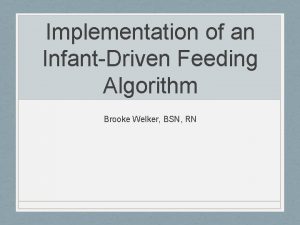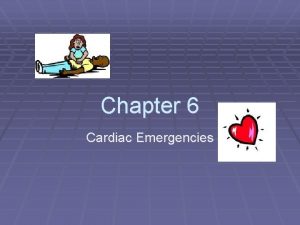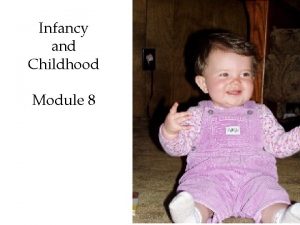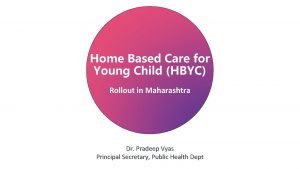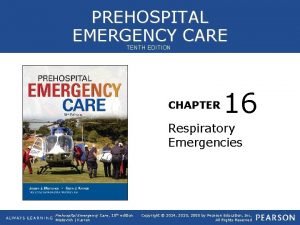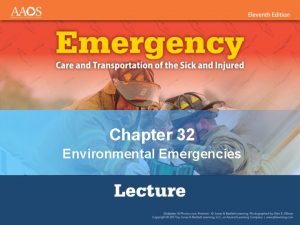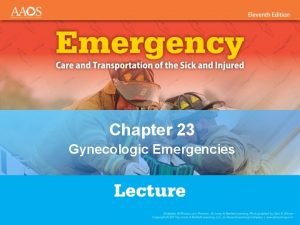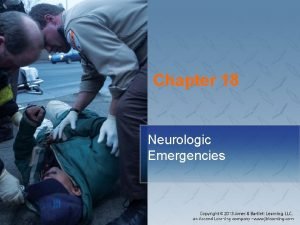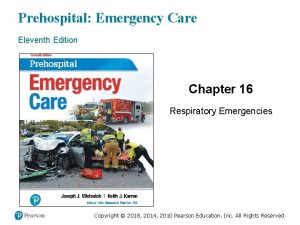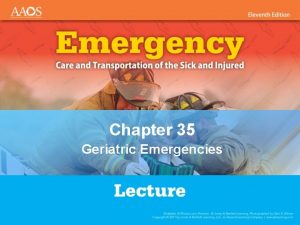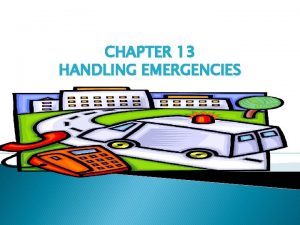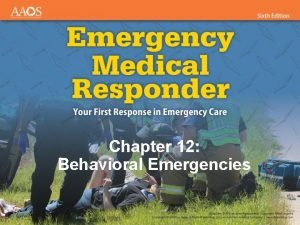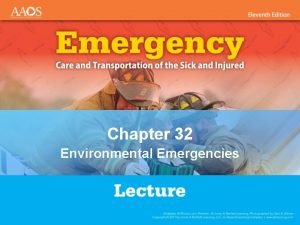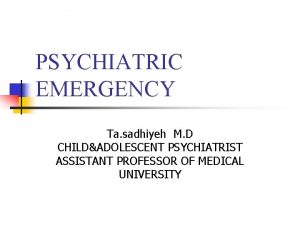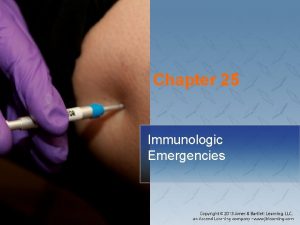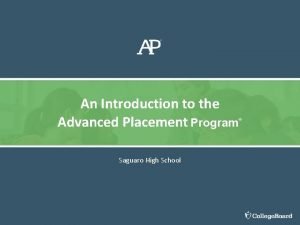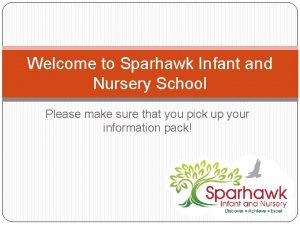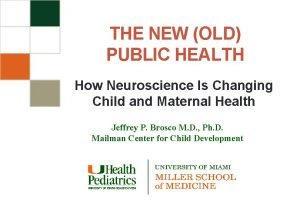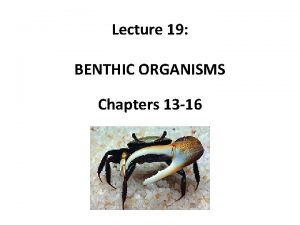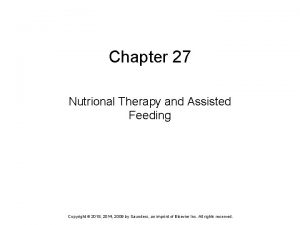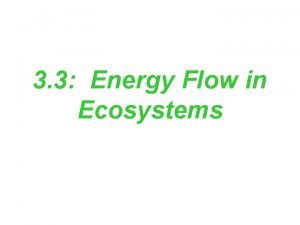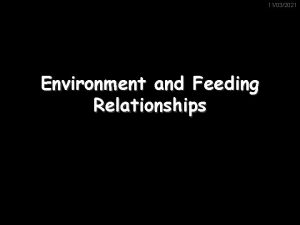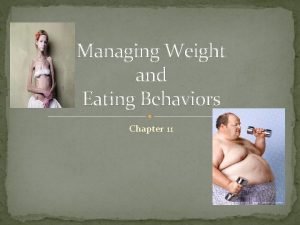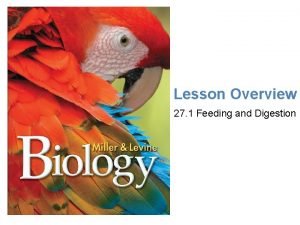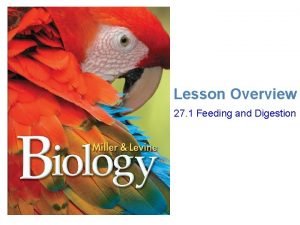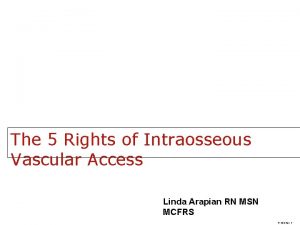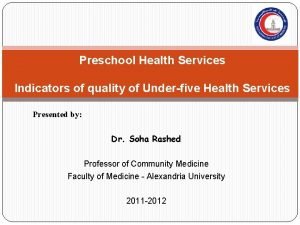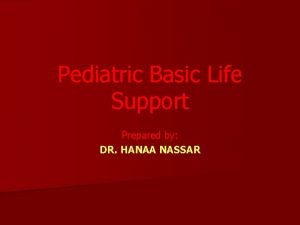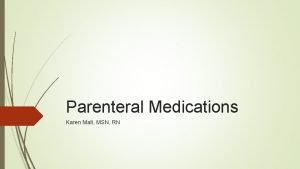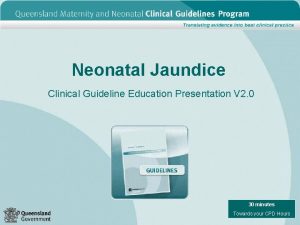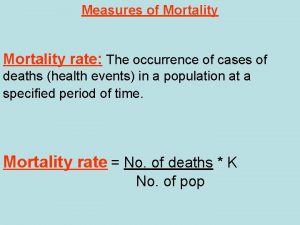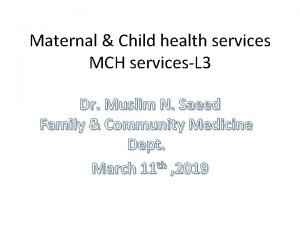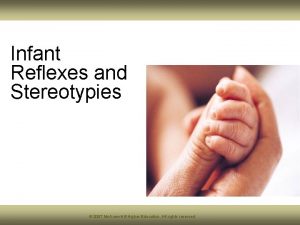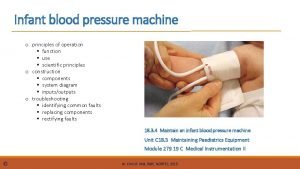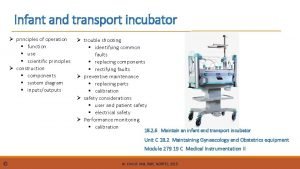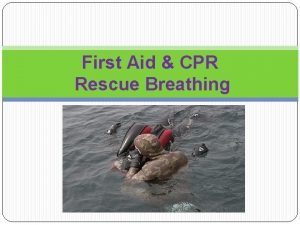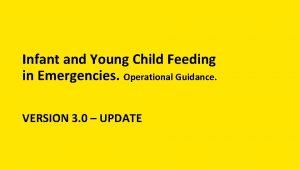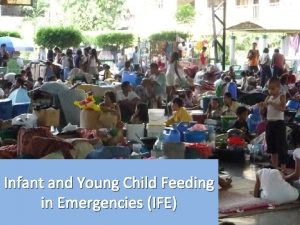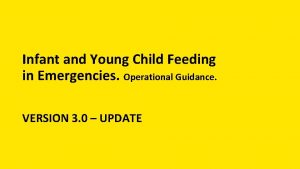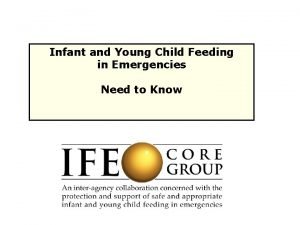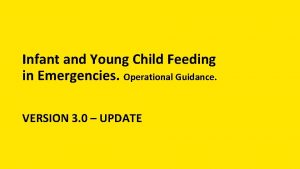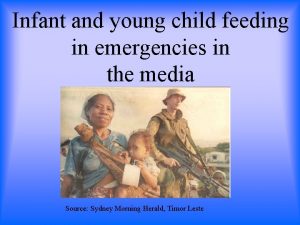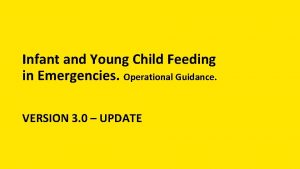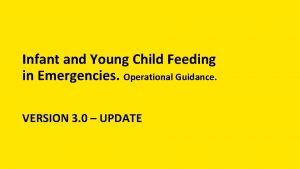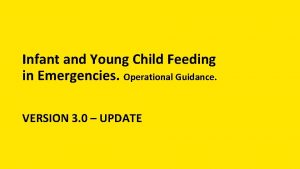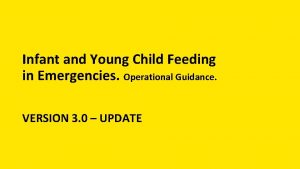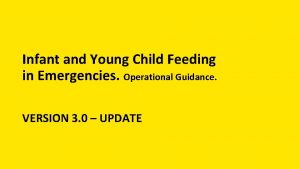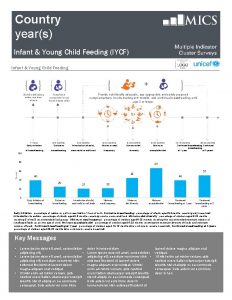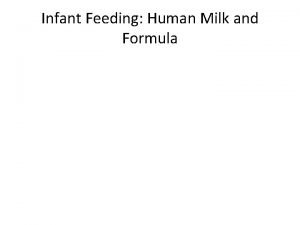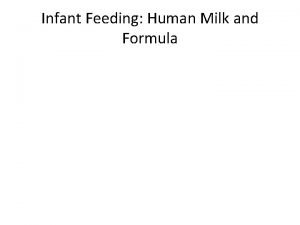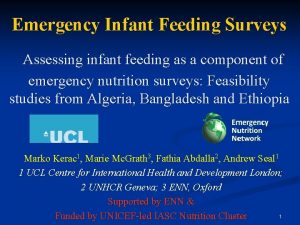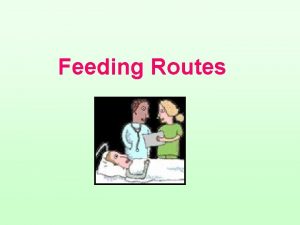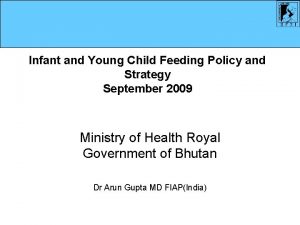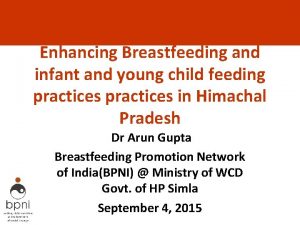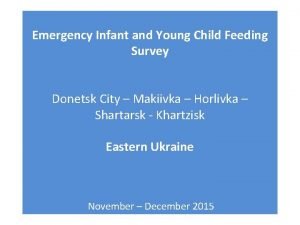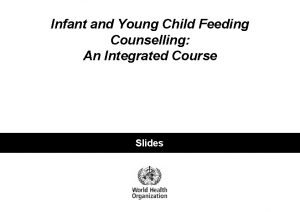Infant and Young Child Feeding in Emergencies Orientation
































































- Slides: 64

Infant and Young Child Feeding in Emergencies Orientation

Aims • What are optimal infant and young child feeding practices • The risks associated with sub-optimal feeding practices, especially in emergencies • What does a minimum response on IFE involve • Nature and source of key guidance and resources

What is IFE? IFE concerns the protection and support of safe and appropriate (optimal) feeding for infants and young children in all types of emergencies, wherever they happen in the world. The well-being of mothers is critical to the well-being of their children.

Safe and appropriate infant and young child feeding in emergencies Optimal infant and young child feeding recommendations Early initiation of breastfeeding (within 1 hour of birth) Exclusive breastfeeding (0 -<6 m) Continued breastfeeding (2 years or beyond) Complementary feeding (6 -<24 m) Complementary foods

Early initiation of breastfeeding Exclusive breastfeeding within one hour of birth saves infant and mothers’ lives

Exclusive breastfeeding Only breastmilk, no other liquids or solids, not even water, with the exception of necessary vitamins, mineral supplements or medicines. 0 -<6 months

Complementary feeding 6 -<24 month olds Support for continued breastfeeding for 2 years or beyond Introduce safe and appropriate complementary foods Frequent feeding, adequate food, appropriate texture and variety, active feeding, hygienically prepared (FATVAH)

Which do you think is the most effective intervention to prevent under five deaths? • Insecticide treated materials • Hib (meningitis) vaccine • Breastfeeding and complementary feeding • Vitamin A and Zinc

Answer: Breastfeeding and complementary feeding Preventative interventions Proportion of under 5 deaths prevented Exclusive and continued breastfeeding until 1 year of age 13% Insecticide treated materials 7% Appropriate complementary feeding 6% Zinc 5% Clean delivery 4% Hib vaccine 4% Water, sanitation, hygiene 3% Antenatal steroids 3% Newborn temperature management 2% Vitamin A 2%

Causes of death in children under 5, 2000 -2003 Maternal and child undernutritio n contributes to 35% U 5 deaths UNDERNUTRITION underlies 53% of under five deaths Adapted from Bryce et al, Lancet 2005; Black et al, Lancet 2008 & Caulfield et al, Am J Clin Nutr 2002

Risk of death if breastfed is equivalent to one The younger the infant, the more vulnerable if not breastfed Age (months) WHO Collaborative Study, Lancet, 2000

Risks of not breastfeeding are even higher in emergencies Conflict, Guinea-Bissau, 1998 Post-conflict, 9 -20 month old children no longer breastfed were 6 times more likely to have died during the first three months of the war compared with children still breastfeeding. Before the conflict, there was no difference in mortality between breastfed and non-breastfed children before the conflict. Jacobsen, 2003.

Increased (mortality) Increaseddeaths mortality in children U 5 in emergencies Daily deaths per 10, 000 people in selected refugee situations 1998 and 1999 people of all ages Deaths/10, 000/Day children under 5 years Camp location Refugee Nutrition Information System, ACC/SCN at WHO, Geneva

U 2 s contribute to global burden of acute malnutrition Many emergencies characterised by increase in acute malnutrition prevalence Niger, 2005 95% of 43, 529 malnourished cases admitted for therapeutic care were U 2 Defourny et al, Field Exchange, 2006. Protection and support of optimal infant and young child feeding is essential in both prevention and treatment of acute malnutrition

Breastfeeding is a lifeline in emergencies Nutrition. Immunological/Physiological al Practica Matern Physical al l Psychological

Why Artificial artificial feeding is always risky No active protection Infant formula powder is not sterile Increases food insecurity and dependency Costly in time, resources and care Bottle and teats Bottle feeding extra source of increases risk infection

Artificial feeding is even riskier in emergencies Bacterial contaminatio n Contaminated water Limited supplies and poor resources

Lessons from Botswana Many infants not breastfed (replacement feeding) Nov 2005 – Feb 2006: Unusually heavy rains, flooding, diarrhoea outbreak Year Time Period Cases U 5 diarrhoea U 5 Deaths 2004 Q 1 8, 478 24 2005 Q 1 9, 166 21 2006 Q 1 35, 046 532++ Creek et al, 2006

Reasons for risky feeding practices A proportion of infants may not be breastfed when an emergency hits Pre-emergency feeding practices may be sub-optimal During an emergency, inappropriate aid may increase artificial feeding.

Risks of untargeted distribution fuelled by donations Yogyakarta Indonesia post-2006 earthquake Relation between prevalence of diarrhoea and receipt of donated infant formula, Yogyakarta Indonesia post-2006 earthquake. Relation between prevalence of diarrhoea and receipt of donated infant formula in children U 2

Artificially fed infants are highly vulnerable in emergencies Mixed fed babies lose protection and invite infection

What are infant feeding recommendations where HIV is prevalent? Consider HIV-free child survival (risk of HIV transmission and non-HIV causes of death)

WHO recommendations on infant feeding and HIV (2007) If HIV status of mother unknown or HIV negative then Exclusive breastfeeding for the first six months, followed by continued breastfeeding for 2 years or beyond, with the introduction of safe and appropriate complementary feeding

WHO recommendations on infant feeding and HIV (2007) If Mother is HIV-infected then Exclusive breastfeeding for the first six months, followed by continued breastfeeding for 2 years or beyond, with the introduction of safe and appropriate complementary feeding unless Replacement feeding is acceptable, feasible, affordable, sustainable and safe (AFASS)

Infant feeding and HIV Where HIV status of an individual mother is unknown or she is HIV negative, then recommended feeding practices are the same optimal feeding practices as for the general population, irrespective of the prevalence of HIV in the population. This offers the best chance of child survival.

What is IFE concerned with? Protection and support Breastfed infants: early initiation, exclusive and continued breastfeeding Breastfed infants: early initiation, exclusive and continued Non-breastfed breastfeeding infants: minimise the risks of artificial feeding All infants and young and safefeeding Non-breastfed infants: children: minimise appropriate the risks of artificial complementary feeding All infants and young children: appropriate and safe Well-being of mothers: nutritional, mental & physical health complementary feeding Well-being of mothers: nutritional, mental & physical health

Key global legislation, frameworks, strategies & initiatives The International Code of Marketing of Breastmilk Substitutes (International Code) The Sphere Humanitarian Charter and Standards The rights of women and children International law and frameworks UNICEF conceptual framework Operational Guidance on IFE Millennium Development Goals Global strategy for Infant and Young Child Feeding Innocenti Declaration (2005) Baby friendly initative

The International Code of Marketing of Breastmilk Substitutes The International Code = World Health Assembly (WHA) Resolution (1981) + subsequent relevant WHA Resolutions • Protection from commercial influences on infant feeding choices. • It does not ban the use of infant formula or bottles. • Controls how breastmilk substitutes, bottles and teats are produced, packaged, promoted and provided. • The Code prohibits free/low cost supplies in any part of the health care system. • Governments encouraged to take legislative measures. • Adoption and adherence to the Code is a minimum requirement worldwide. Upholding the Code is even more critical in emergencies.

Violations of the International Code International violations in. Code emergencies in Emergencies Breastmilk substitute (BMS): “any food being marketed or otherwise represented as a partial or total replacement of breastmilk, whether or not suitable for that purpose” The companies who produce BMS Those involved in the humanitarian response Emergencies may be seen as a opportunity to open or strengthen a market for infant formula & ‘baby foods’ or as a public relations exercise Often violations of the International Code in emergencies are unintentional but reflect poor awareness of the provisions of the Code

The Sphere Project • Infant and young child feeding is included in Sphere indicators to meet minimum standards on food aid, nutrition and food security • Infant and young child feeding is a key consideration for other sectors, e. g. WASH, health, security • Upholding the International Code and the Operational Guidance on IFE are central to meeting Sphere standards

Minimum response in every emergency

What must I do to protect and support safe and appropriate IFE?

Look at every situation through the eyes of a mother and child

Be ready with frontline assistance for mothers and children

A stressed mother can successfully breastfeed • Acute stress can temporarily affect ‘let down’ or release of breastmilk. • Reassuring support will help decrease a mother’s stress and increase her confidence. • Protection, shelter, and a reassuring atmosphere will all help. • Breastfeeding helps reduce stress in mothers. • Breastmilk production is not affected by chronic stress.

A malnourished mother can successfully breastfeed Moderate malnutrition Does not affect breastmilk production but can affect micronutrient content. Micronutrient supplementation may be needed. Severe malnutrition Breastmilk production and quality may be reduced. Therapeutic care for mother and skilled breastfeeding support needed. Feed the mother and let her feed her baby

Offer ‘safe places’ for breastfeeding and feeding support

Prioritise pregnant and lactating women for shelter, food, water and security

Make sure every newborn initiates breastfeeding within 1 hour of birth

Ensure access to safe and adequate complementary foods, appropriate to needs and context

Locate technical capacity Wet nurse relactates an abandoned baby (Myanmar, 2008) Unaccompanied infants with no source of breasmilk (Rwanda, 1994)

Coordination is critical UNICEF lead coordinating agency on IFE within UN system • • IASC Nutrition Cluster Core Commitments to Children In collaboration with government & other agencies Specification detailed in the Operational Guidance on IFE

Do not seek or accept donations of BMS, bottles & teats • Donated (free) or subsidised supplies of breastmilk substitutes (e. g. infant formula) should be avoided. • Donations of bottles and teats should be refused in emergency situations. • Any well-meant but ill-advised donations of breastmilk substitutes, bottles and teats should be placed under the control of a single designated agency. Operational Guidance on IFE, v 2. 1, Feb, 2007

International Code in emergencies Emergency preparedness: Strong, enforced national legislation Protection: Uphold provisions of the International Code Accountability: Monitor and report on Code violations

Do not distribute milk powder or liquid milk as a single commodity Dried milk products should be distributed only when pre-mixed with a milled staple food and should not be distributed as a single commodity Dried milk powder may only be supplied as a single commodity to prepare therapeutic milk (using a vitamin mineral premix such as therapeutic CMV) for on-site therapeutic feeding. 6. 4. 2 Operational Guidance on IFE, v 2. 1, Feb, 2007 There is no distribution of free or subsidised milk powder or of liquid milk as a single commodity Key Indicator. Food Aid Planning Standard 2. Sphere, 2004

Communicate clearly on IFE Should be… • Consistent • Technically sound • Strong • Responsive • Innovative • Press offices and general media are key influences www. ennonline. net/ resources

Be prepared and prepare others Orientation of key ‘players’: Nutritionists & breastfeeding counsellors Health and nutrition staff Media and press agencies Donors Military Water and sanitation staff Capacity building and training of nutrition and health staff Do. D photo by: TSGT PERRY HEIMER

Minimum response on IFE • Coordinated timely response informed by assessed need • Protective, well communicated policy & legislation • Simple measures across sectors that prioritise infants & young children and their carergivers • Basic interventions to protect and support optimal IYCF • Technical capacity • Strong communication • Capacity building (orientation & training) • Emergency preparedness • Accountable to actions and inaction

The best emergency preparedness is a confident, well mother capable of nourishing her child. The best emergency response is one that works with her to protect and support her confidence and capacity. Venezuala, after the flood

Are you ready?

Key Resources & Initiatives Access resources at www. ennonline. net/ife

Collaborative effort on IFE Current members and associate members: WHO WFP www. ennonline. net/ife

The IFE Core Group gratefully acknowledge the support of UNICEF-led IASC Global Nutrition Cluster to their coordinating agency, the Emergency Nutrition Network (ENN), to develop this content

EXTRAS

An emergency is extraordinary situation of natural or political origin that puts the health and survival of a population at risk. An emergency can happen anywhere

42 countries account for 90% U 5 deaths 6 countries account for 50% of U 5 deaths

11 Key Points Practical Steps 1. Policy 2. Training 3. Co-ordination 4. Monitoring 5. Integrated, multi-sectoral interventions 6. Minimise risks of artificial feeding

Key points of the Operational Guidance on IFE 1. Appropriate and timely support of infant and young child feeding in emergencies (IFE) saves lives. 2. Every agency should develop a policy on IFE. 3. Training and orientation of all technical and non-technical staff in IFE 4. UNICEF is likely co-ordination agency on IFE in the field. 5. Integrate key information on infant and young child feeding into routine rapid assessment procedures

Key provisions of the Operational Guidance on IFE 6. Simple measures put in place early in response 7. Integrated support 8. Include foods suitable for older infants and young children 9. Avoid donations or subsidised supplies of breastmilk substitutes, bottles and teats 10. Technical personnel must decide whether to accept, procure, use or distribute infant formula 11. Breastmilk substitutes, other milk products, bottles and teats must never be included in a general ration distribution.

HIV and infant feeding in emergencies The risks of infection or malnutrition from using breastmilk substitutes are likely to be greater than the risk of HIV transmission through breastfeeding. Therefore, support to help all women to achieve early initiation and exclusive breastfeeding for the first six completed months and the continuation of breastfeeding into the second year of life are likely to provide the best chance of survival for infants and young children in emergencies. Operational Guidance on IFE, 5. 2. 8, v 2. 1, Feb 2007.

Simple measures and basic interventions 1. 2. 3. 4. 5. 6. 7. Shelter, water, food, security to U 2 households Registration of vulnerable groups, e. g. orphans Supportive places to breastfeed Priortise pregnant and lactating women Complementary feeding needs Newborns: early initiation of breastfeeding Frontline support: breastfed & non-breastfed infants

What actions can you take? • • Look at your country situation Identify challenges Assign actions and responsibilities Get ready. . . .


Summary points • • Emergencies are highly infectious environments Breastfeeding and complementary feeding are life saving interventions U 2 s are highly vulnerable, the younger the child the greater the risk Non-breastfed infants are particularly at risk of malnutrition, illness and death Artificial feeding is risky, difficult & resource intensive Donations and untargeted distribution of milk increase morbidity in children HIV-free child survival, not just HIV transmission, is a key consideration
 Infant-driven feeding scale
Infant-driven feeding scale Specialized nutrition support
Specialized nutrition support Infants children and adolescents 8th edition
Infants children and adolescents 8th edition Ethnocentrism and polycentrism
Ethnocentrism and polycentrism Lesson 6: cardiac emergencies and using an aed
Lesson 6: cardiac emergencies and using an aed Endocrine and hematologic emergencies
Endocrine and hematologic emergencies Emt chapter 18 gastrointestinal and urologic emergencies
Emt chapter 18 gastrointestinal and urologic emergencies Chapter 28 first aid and emergencies
Chapter 28 first aid and emergencies What is visitor pre registration in picme
What is visitor pre registration in picme Preschoolers often have trouble buttoning shirts
Preschoolers often have trouble buttoning shirts Hbyc card
Hbyc card Child workers some as young as 10
Child workers some as young as 10 I should take a local orientation dive whenever i
I should take a local orientation dive whenever i Chapter 16 respiratory emergencies
Chapter 16 respiratory emergencies Major nutritional deficiency diseases in emergencies
Major nutritional deficiency diseases in emergencies Chapter 32 environmental emergencies
Chapter 32 environmental emergencies Chapter 23 gynecologic emergencies
Chapter 23 gynecologic emergencies The term behavioral crisis is most accurately defined as
The term behavioral crisis is most accurately defined as Chapter 18 neurologic emergencies
Chapter 18 neurologic emergencies Chapter 16 respiratory emergencies
Chapter 16 respiratory emergencies Dic labs
Dic labs Gems diamond geriatric
Gems diamond geriatric Chapter 13 handling emergencies
Chapter 13 handling emergencies Chapter 12 behavioral emergencies
Chapter 12 behavioral emergencies Chapter 32 environmental emergencies
Chapter 32 environmental emergencies Chapter 17 cardiovascular emergencies
Chapter 17 cardiovascular emergencies Psychiatric emergency
Psychiatric emergency Qut security emergency extension number
Qut security emergency extension number Immunologic emergencies
Immunologic emergencies A 41 year old man presents with slow irregular breathing
A 41 year old man presents with slow irregular breathing Left child right sibling
Left child right sibling Keeping an infant safe and well section 7-3
Keeping an infant safe and well section 7-3 Kenmore park infant and nursery school
Kenmore park infant and nursery school Keeping an infant safe and well section 7-3
Keeping an infant safe and well section 7-3 Saguaro infant care and preschool
Saguaro infant care and preschool Sparhawk infant and nursery school
Sparhawk infant and nursery school Brigance test for 4 year-old score
Brigance test for 4 year-old score Jama 2017
Jama 2017 Examples of benthic organisms
Examples of benthic organisms Chapter 27 nutritional therapy and assisted feeding
Chapter 27 nutritional therapy and assisted feeding Chapter 18 eating and feeding disorders
Chapter 18 eating and feeding disorders Simple ecosystem
Simple ecosystem Environment and feeding relationship grade 7
Environment and feeding relationship grade 7 Oral placement therapy
Oral placement therapy Chapter 11 managing weight and eating behaviors
Chapter 11 managing weight and eating behaviors Lesson 11: feeding and digestion
Lesson 11: feeding and digestion Lesson 11 feeding and digestion
Lesson 11 feeding and digestion Hart plain infant school
Hart plain infant school The webinar will begin shortly
The webinar will begin shortly The infant industry argument
The infant industry argument Intraosseous meaning
Intraosseous meaning Neonatal mortality rate
Neonatal mortality rate Infant cpr algorithm
Infant cpr algorithm Vastus lateralis injection site infant
Vastus lateralis injection site infant Pain scale for kids
Pain scale for kids Total bilirubin newborn chart
Total bilirubin newborn chart Proportionate mortality rate formula
Proportionate mortality rate formula Infant reflexes chart
Infant reflexes chart Teratogens examples
Teratogens examples Juan soriano la niña muerta; the dead girl; dead infant
Juan soriano la niña muerta; the dead girl; dead infant Infant reflexes chart
Infant reflexes chart Infant blood pressure
Infant blood pressure Transportable incubator
Transportable incubator Where was botulism first discovered
Where was botulism first discovered Llf in cpr
Llf in cpr
